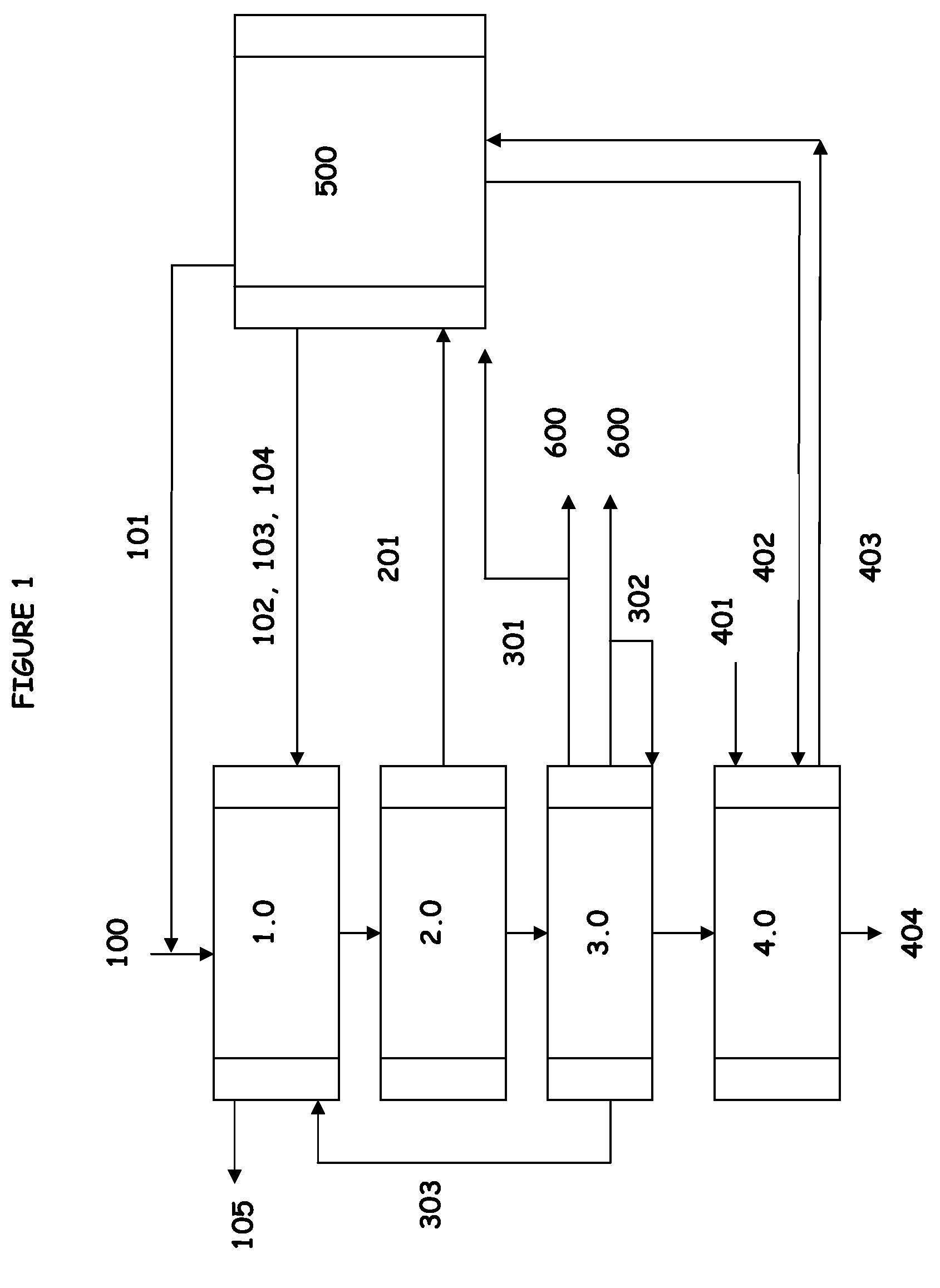Production of levulinic acid and levulinate esters from biomass
a technology of levulinic acid and esters, which is applied in the preparation of carboxylic compounds, fuels, organic chemistry, etc., can solve the problems of difficult to separate water from the reaction mixture, require high-cost raw materials, and force the esterification process to a high yield, etc., to achieve enhanced product yield and purity, economic and energy-saving, and facilitate the hydrolysis of biomass
- Summary
- Abstract
- Description
- Claims
- Application Information
AI Technical Summary
Benefits of technology
Problems solved by technology
Method used
Image
Examples
Embodiment Construction
[0011]The present disclosure now will be described more fully hereinafter, but not all embodiments of the disclosure are necessarily shown. While the disclosure has been described with reference to exemplary embodiments, it will be understood by those skilled in the art that various changes may be made and equivalents may be substituted for elements thereof without departing from the scope of the disclosure. In addition, many modifications may be made to adapt a particular situation or material to the teachings of the disclosure without departing from the essential scope thereof.
[0012]A process of producing levulinic acid-based compounds from biomass of the present disclosure comprises:[0013](i) a feed preparation module characterized by subjecting biomass to a high-temperature refining treatment to generate fiber pulps;[0014](ii) a hydrolysis reaction module wherein the generated fiber pulps are hydrolyzed to provide a product mixture including levulinic acid; and[0015](iii) a prod...
PUM
| Property | Measurement | Unit |
|---|---|---|
| streaming temperature | aaaaa | aaaaa |
| temperature | aaaaa | aaaaa |
| equivalent diameter | aaaaa | aaaaa |
Abstract
Description
Claims
Application Information
 Login to View More
Login to View More - R&D
- Intellectual Property
- Life Sciences
- Materials
- Tech Scout
- Unparalleled Data Quality
- Higher Quality Content
- 60% Fewer Hallucinations
Browse by: Latest US Patents, China's latest patents, Technical Efficacy Thesaurus, Application Domain, Technology Topic, Popular Technical Reports.
© 2025 PatSnap. All rights reserved.Legal|Privacy policy|Modern Slavery Act Transparency Statement|Sitemap|About US| Contact US: help@patsnap.com

